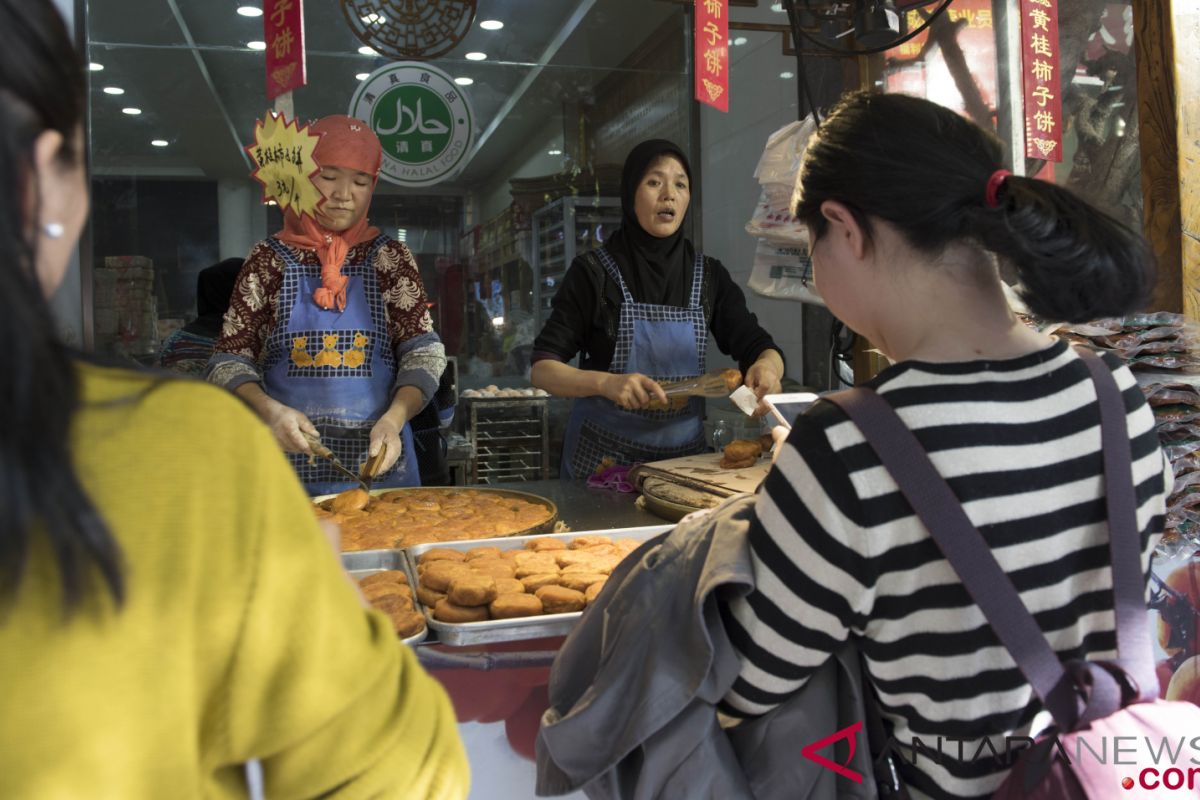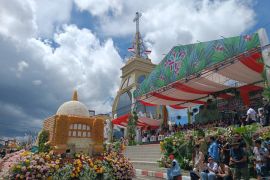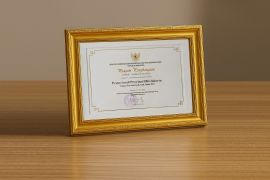"On Chinese national holidays, such as on October 1, this area is very crowded by visitors, both young and old, to enjoy the holiday season especially having halal foods and drinks," Wen Boya said, a local tourist.Jakarta (ANTARA News) - When traveling to China, do not forget to put a Muslim tourist site in Xi`an City, Shaanxi Province, in your list of tourist visits because the area is very interesting, especially for Muslims.
The tourist area which is located on the Bei-Yuan-Men Muslim Cultural Center Road is a special pedestrian street that has approximately 1,100 meters long. Here, tourists can enjoy culinary dishes that are all guaranteed halal (permissible according to the Islamic Law) and are served both on the side of the road and in restaurants with the heyday architecture of the Ming and Qing Dynasties.
Along the road, travelers can enjoy cooking demos by waitresses with Chinese-styled Muslim dress of making unique foods such as sweets, and see how they slice lambs hanging in front of their restaurants.
According to Wen Boya, a local tourist who has several times visited the tourist destination which was built between the Ming and Qing Dynasties, the area is always visited by domestic and foreign tourists, especially during holidays.
"On Chinese national holidays, such as on October 1, this area is very crowded by visitors, both young and old, to enjoy the holiday season especially having halal foods and drinks," Wen Boya said, while offering one of the special foods in the area called `persimmon` cake.
The yellowish red pastel-shaped cake made of tubers contains nuts and sesame, she said.
When you are hungry, you can very easily choose a restaurant based on your taste, Boya said, referring to a restaurant that serves various foods such as sweet porridge made of rice and beans, fried lamb, dumplings, cold noodles, sticky rice with candied-dates sprinkle and many more dishes.
After lunch, travelers can continue their journey by enjoying the atmosphere of the market where many merchants selling foods and beverages, as well as various souvenirs, including clothing, veils, bags, dolls, key chains, refrigerator magnets, historical buildings and terracotta statues miniatures.
"Let me invite you to a souvenir shop and help you bargain. The average price here ranges from 15 to 100 Yuan depending on the type of the goods," Boya who is also an employee of the leading heavy industry company in Xian said, while ushering Indonesian journalists to a souvenir shop.
About 80 percent of the population in these unique historical and cultural destinations are Muslims and the rest are of other faiths and followers of different faiths, Boya said, adding that the area has ancient buildings, including a mosque with the Ming and Qing Dynasties-style architecture. The building materials were mostly original from that era.
Religious tourism
After enjoying the culinary and shopping for souvenirs, visitors can do religious tours to the Xi`an Grand Mosque. According to historical records on stone inscriptions, the mosque was built in 742 AD under the rule of Emperor Xuangzong Li Longji during the Tang Dynasty. The mosque continued to be developed during the Song, Yuan, Ming and Qing Dynasties, up to the present time when the place of worship was around 1,276 years old.
Domestic and foreign tourists, including non-Muslims, can enter the mosque`s courtyard through several arches made of ancient wood which are still intact with typical carvings from the Ming and Qing Dynasties.
According to Larry Zheng, a local tourist who has visited the area and escorted Indonesian journalists to the religious site, Muslim travelers can enter the mosque to worship while enjoying the beauty of its unique architecture.
"But, non-Muslim visitors are only allowed to be in the outside of the mosque complex. Here, they can take a close look at Muslim community`s activities and the beauty of architectures of the mosque and surrounding buildings," Larry, an employee at a heavy industry company in China, said.
Before entering the religious tourism area, visitors can get initial information about the grand mosque from one of the mosque`s priests, Imam Mohammad Isherg or also known as Jia Xiping. He also offered several souvenir products and a book about the Xi`an Grand Mosque sold in his sister`s shop.
"Please shop at my sister`s. The prices are cheaper than those of items sold in other shops," Mohammad Iserg said while showing a book about the Xi`an Grand Mosque.
Imam Isherg comes from a Muslim family and began studying Islam since he was a child. He learned from several famous Chinese priests such as Ma Qinhua, Li Tingxian and Ding Jiping and studied the Quranic commentaries, hadith and Islamic law.
The Islamic religious figure who have learned about Islam at the Chinese Islamic Institute and participated in the World Imam Training at Al-Azhar University, Egypt, has written a book about the Grand Mosque of Xian which has become a protected cultural and historical heritage.
Talking with fluent Indonesian, Mohammad Isherg explained that the mosque stands on an area of about 13,000 square meters consisting of a 6,000 square meter building that is rectangular in shape, extending from east to west, and divided into five yards.
Data obtained from the mosque show that since China opened to the world in 1978, the Xi`an Grand Mosque has attracted more than 10 million foreign tourists from various countries including Hong Kong, Macao and Taiwan. The mosque has also received several state guests including government officials, heads of state and other honored guests from around the world.
Outside the Muslim tourist area, travelers can also visit other interesting historical attractions in Xi`an such as the Drum Tower and the Bell Tower.
The Drum Tower which built during the Ming Dynasty is fascinating because of its large drum which is 1.8 meters high, 2.83 meters in diameter in the head, 3.43 meters of drum belly, and weighing 1,800 kilograms.
Meanwhile, the giant bell that hung in front of the Bell Tower has 2.47 meters high and weighs nearly six tons.
The historic objects in Xi`an made during the Tang Dynasty were originally used for various purposes such as to show time and an alarm for dangerous situation like when the enemy came, and also functioned as a musical instrument.
Editing by Fardah Assegaf
Reporter: Bambang Purwanto
Editor: Heru Purwanto
Copyright © ANTARA 2018












